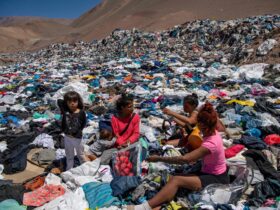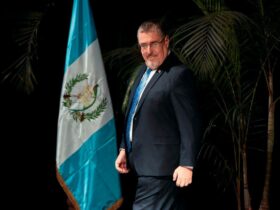A country vulnerable to natural disasters and plagued by political instability and corruption, Haiti was estimated to have a poverty rate of 52.3% percent in 2021 and ranked 179 out of 180 in the UN’s 2020 Human Development Index. Haiti’s natural disasters, namely earthquakes, hurricanes and floods, have caused extensive damage to civilian infrastructure and perpetuated its economic insecurity.
Although private “orphanages” have existed for years prior, the three years following Haiti’s major earthquake in 2010 saw more than a doubling of child institutions in the country, increasing from 300 orphanages to 752 in 2013 alone.
This pervasive poverty and homelessness crisis has led to a total of at least 30,000 Haitain children living in orphanages. About 80% percent of those children, contrary to the meaning of “orphan,” have at least one living parent. Unable to sustain their children’s wellbeing, these parents are persuaded to relinquish them to privately-run orphanages that promise the children will receive shelter, food and education.
This is often not the outcome. Instead, the children living in Haiti’s orphanages face exploitation and trafficking unintentionally funded by foreign donors.
“This orphanage business – where orphanages are established and recruit children to raise donations from foreigners – is becoming increasingly recognised globally as a form of trafficking,” says Jamie Vernaelde of Lumos, an NGO advocating for the end of institutionalization of children.
The orphanage directors pay individuals called “child finders” to single out struggling families and recruit the children into orphanages, convincing the parents of a better life and occasionally providing $75 as compensation.
Lumos reports speaking with children living in orphanages who said they were often beaten, denied adequate food and prevented from learning English so they could not interact with foreign volunteers, missionaries and tourists. One girl said she had to pay her school fees through prostitution. Others reported being forced to cook and clean and never attending school.
The Guardian spoke with another victim who said, “She [the orphanage director]would beat us at night, always. She would take us to her room, put us on our knees with our arms outstretched holding rocks. Or sometimes she left us out in the sun until she remembered about us.”
President of the National Human Trafficking Committee, Fils-Lien Ely Thelot, attributes the problem in part to the ignorance of the traffickers. “You can find people that practice human trafficking, and they are not conscious that what they are doing is human trafficking,” said Thelot.
The US Department of State categorizes Haiti on its “Tier 2 Watch List” for human trafficking, indicating its prevalence in the country and that although Haiti had made efforts to combat it, more needs to be done.
Prosecution is the only way to set the standard that human trafficking is not acceptable, but the Haitain government is not providing the proper resources. Despite the creation of a national committee on human trafficking in 2015, it has received no funding, has no employees and has no connections with official authorities that are supposed to assist them in the field.
The government has an abundance of other social problems that the administration prioritizes over the issue of child trafficking.
Aside from trafficking and exploitation, the children in orphanages face potential physical, social and psychological issues. A Lumos report found that orphans are 10 times more likely to be involved in prostitution as adults, 40 times more likely to have a criminal record and have a 500 times higher rate of suicide.
Babies and infants in particular suffer from a lack of one-on-one affection that the orphanages either cannot or are unwilling to provide.
Moreover, traffickers recognize that such negligent conditions only encourage more pity money from foreign donors.
Approximately $100 million a year in donations is sent to the more than 750 for-profit orphanages, primarily from church groups and non-profit organizations based in the United States. Specifically, Lumos found that 90 percent of these donors were faith-based. Most of this money never reaches its intended recipient.
Additionally, international interest in Haiti through volunteering, tourism and mission trips to these orphanages has created a market to keep them financially sustained and to continue filling them with children. Instead, Lumos recommends that volunteering be done through ethical agencies that focus on community development and family preservation.
With family preservation as a key focus in helping combat Haiti’s orphanage crisis, Lumos encourages phasing out orphanages and replacing them with foster care and small group homes, as countries like the United States have done. The NGO finds that they are less expensive and provide children with stronger futures. This would also help account for children who are actually orphans by definition and have no family to be returned to. Since beginning its Haiti operations in 2015, it’s already shut down 13 institutions and returned 242 children to their families.
Non-profit organizations like The Potter’s Family provide family preservation and community assistance too, in its case by providing formula and assistance to babies whose mothers have died.
“It’s about strengthening families first, and not all children are going to be safe in families – we know that in any developed country – so there is a possibility of developing foster care in Haiti. It’s about investing in support services for all communities,” Vernaelde said.
There has been modest media attention given to this issue, including a 2014 documentary called “Poverty, Inc.” that examines the rise of charity as a multibillion dollar poverty industry in developing countries. Its segment on the Haitain orphanage crisis points to providing job opportunities for the parents of poverty orphans as key in helping families sustain themselves and limiting the use of private orphanages.
Considering how lucrative and complex the poverty industry is for charities and other participating organizations, change to the orphanage system is likely to be slow.
Institutional efforts to support family stability and self-sufficiency are also being threatened by ongoing violent protests against government corruption and economic decline. These demonstrate the unrest and anger felt by Haitian citizens about their current living conditions. Gang violence has suspended food and fuel shipments and warehouses run by charities and aid organizations that serve vulnerable populations have been looted, resulting in limited availability of food and drinking water.
Unless Haiti is able to stamp out these pervasive issues at the source by achieving systemic change, the private orphanage business will continue to perpetuate poverty orphans.







